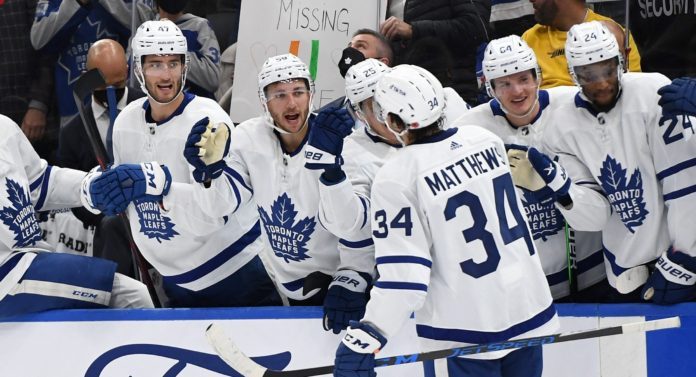
Both of the following statements can be true:
– Auston Matthews is elite and will show it regardless of who he plays with
– Auston Matthews and Mitch Marner are elite together
With Marner out against the Avalanche and Matthews potting two goals, debate inevitably followed as to whether the Leafs should split the two up. It is a fair question, and I don’t think anyone asking it is actually questioning whether Matthews and Marner are elite together.
Note: The two are elite together – since 2019, they have played 1610:42 together at even strength with a 54.67 CF% and 112 goals for vs. 67 against (a percentage over 62).
Splitting up the two is something I also have wondered about routinely over the years. I do think it would do Matthews some good to have to play without a star attached to his hip – and I still do, to some degree. It is a good challenge for Matthews to ask him to create his own offense a little more. Working through different circumstances/situations can help grow a player’s game, and that type of problem-solving can do him some good in the playoffs, where it gets tighter and tougher to score.
Matthews certainly doesn’t need Marner to produce offense. We saw examples of it in Colorado, where he was dominant for long stretches of the game.
There are also ancillary benefits worth mentioning. The first is elevating secondary forwards by playing them with the stars rather than limited minutes without them that essentially serve as a rest period until the big guns are ready to go back over the boards.
The other advantage is the added versatility of spreading out the stars over three lines and creating three high-end lines that most teams won’t be able to keep up with in the regular season.
Building versatility is important and gives the Leafs the comfort come playoff time to turn to different line combinations in the event of the well running dry. In the past two playoffs, when the scoring dried up, the Leafs lacked enough options Sheldon Keefe was comfortable turning to.
There is still a lot of regular-season hockey left, to be sure, but it’s a consideration should the Leafs play a Florida team that has Aleksander Barkov on one line, Jonathan Huberdeau on the next, and Sam Reinhart on another. It might actually make sense in such a situation to experiment with spreading out the star talent over three lines.
When it comes to splitting up Matthews – Marner specifically, one of the better arguments against it concerns the other team playoff teams in the Leafs‘ division: Boston and Tampa Bay. The Bruins, as everyone knows, have the “perfect” line. The Lightning have the Point – Kucherov duo. The Leafs do not have a true shutdown line and typically use Matthews head-to-head against the other team’s best — as they should. They then supplement it through deploying their forwards by zone starts, which is where the Kampf – Kase connection comes in particularly handy. You can see it in the chart below.
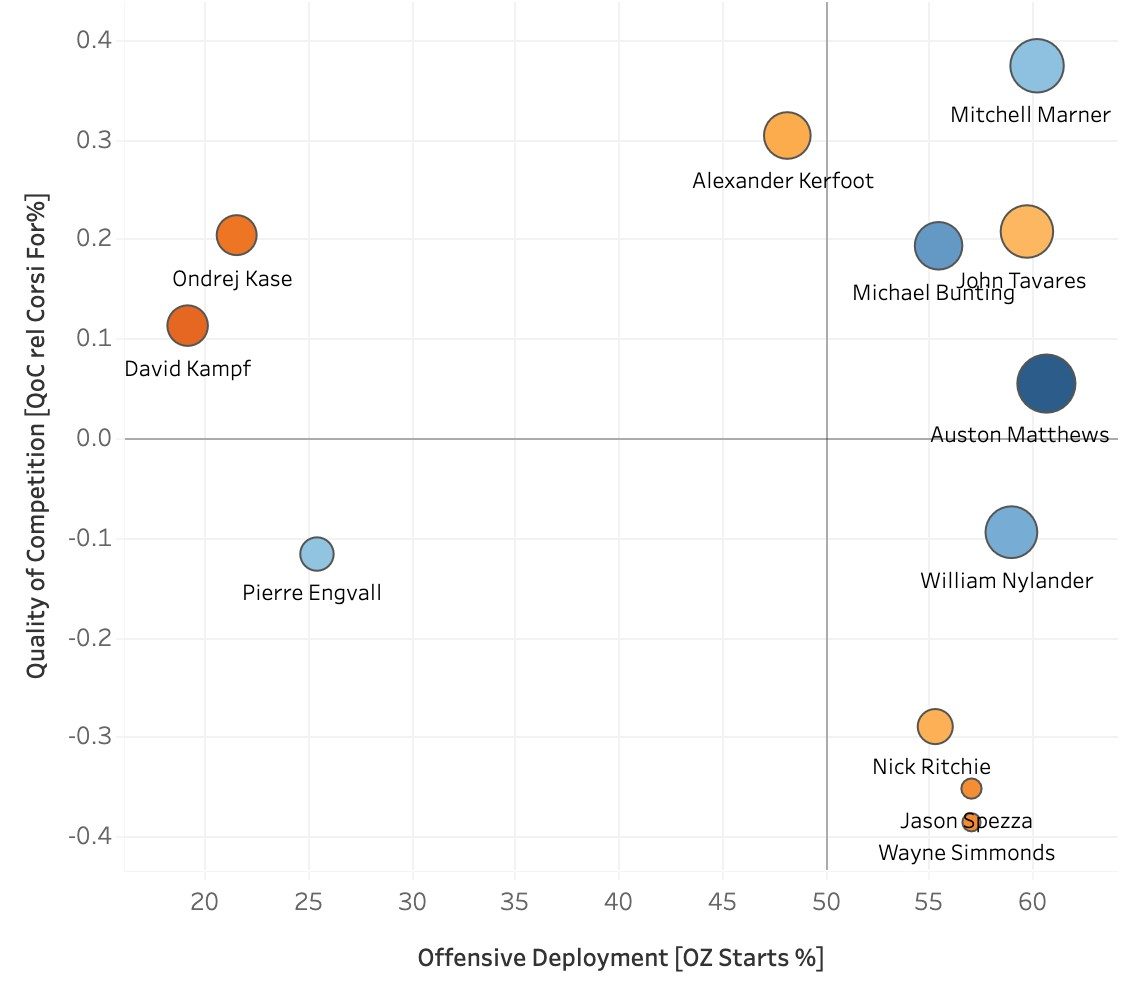
Make no mistake, this isn’t a heavy-minute, shutdown line, though. That will fall on Matthews – and Marner – matching up head-to-head and winning their matchup. It makes little sense for the Leafs to play a full playoff series against two of the best lines in hockey while Matthews plays with second or third-line forwards. They will have to go power-on-power.
Now, if the conversation shifts to splitting up Tavares/Nylander, that’s a different story altogether. In the meantime, it’ll be fun – and could have some value! – to split up Matthews and Marner, but the Leafs are going to need those two together to win high-end matchups in the playoffs if the Leafs are ever going to get over the playoff hump in the Atlantic Division.
Notes
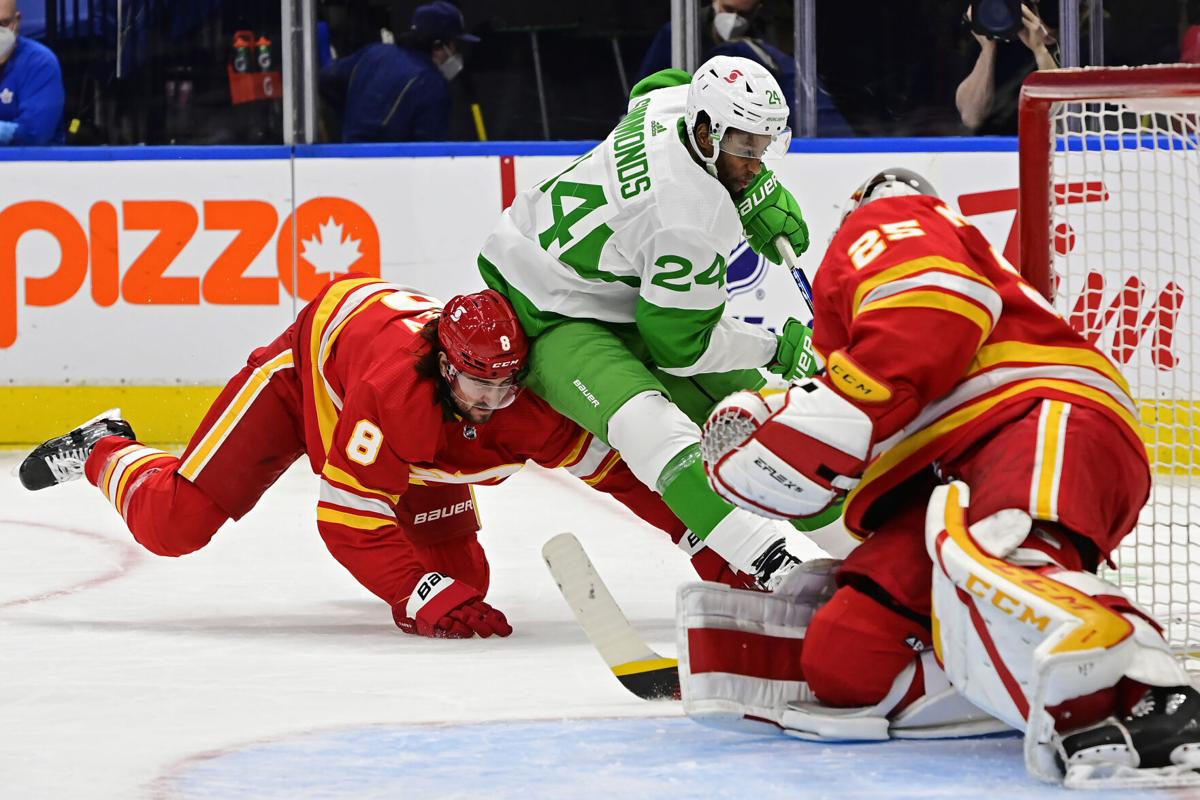
– Kind of quietly, Wayne Simmonds is on pace for nearly 30 points (28). He’s up to 11 in 32 after putting up nine in 38 his first season as a Leaf. The two seasons before signing in Toronto: 25 and 30 points. He has had some trouble staying healthy, so we’ll see if that continues (it did derail his first season as a Leaf), but he’s having a nice little renaissance and carving out a good role as a fourth-liner. He made a heck of a play on the power play to set up Nick Ritchie for a goal against the Avs.
– Simmonds is also tied for second on the team in drawn penalties (although he gives that back and then some as he’s taken three more than he’s drawn). We know that Michael Bunting is the penalty drawing leader on this team, but the player who nets out as the penalty drawing leader on the team is actually Alex Kerfoot at +8. Bunting is at +6, and so is Mitch Marner.
– Not to pile on the guy, but the player with the worst penalty plus/minus on the team is Nick Ritchie at -7. Ondrej Kase is next at -4. It’s hard to find positives in Ritchie’s overall game so far, all things considered.
– Rasmus Sandin played a season-low 11:16 against the Colorado Avalanche. That’s one of the best teams in the league — probably not a sign of things to come at this stage — but it’s something to watch as the games tighten and the pace picks up.
Sandin is great with the puck, but he’s not a particularly fast skater and he isn’t exactly the tallest. The underlying numbers have been encouraging in a sheltered role, but against better teams, he isn’t going to be sheltered to the same extent on account of the fact that those teams are deeper.
– A nice asset for the Leafs as a team this season is that they lead the league in faceoff percentage. It can be a big help to their number-one ranked power play and top-five penalty kill.
Quotes
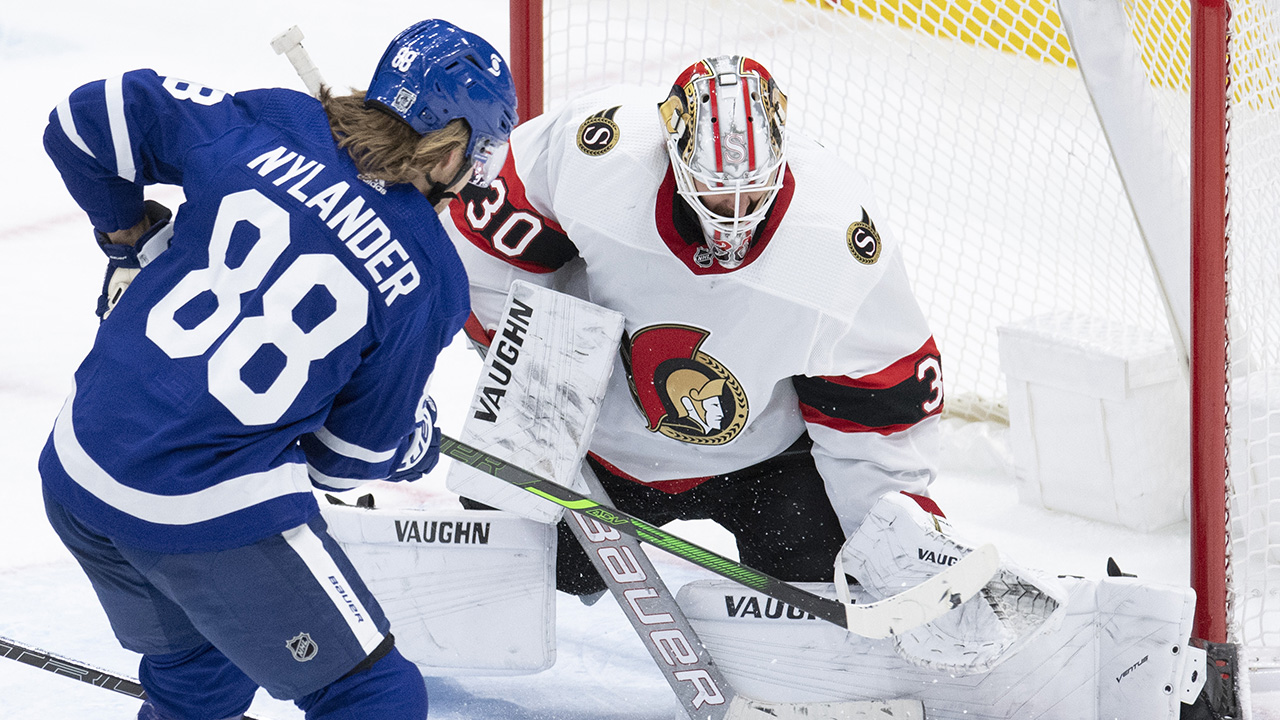
“Yeah, it obviously shows that he has belief in that area of the game when we’re bearing down to not get scored on, so it means a lot and that’s an area of my game where I’ve been wanting to play at.”
– William Nylander on playing on the penalty kill and defending leads
I thought William Nylander did a good job on the PK. He’s able to read the game well and block passing lanes nicely. Plus, if the puck ever does end up on his stick, he’s sure-handed enough that we know he’s getting out it of the zone.
Give credit where it’s due: There are a lot of star players who don’t want to kill penalties. It does not appear Nylander is one of them.
“If I play up to my standard, we win that game every time.”
– Jack Campbell after Saturday’s 5-4 loss in Denver
I know we’ve pointed this out before, but it is worth repeating: This verges on self-destructive behaviour. Anytime the Leafs lose, it’s become like clockwork for me to go see if Campbell puts unnecessary levels of blame on himself after the game.
I think it is just a case of finding greater consistency and finding ways to impact the game, whether that is scoring or whether that is using his physicality and disrupting the game that way. That is really what you are looking for. That has really been the gist of the conversations that I have had with Nick throughout the season… Nick has done what we have asked of him. We can’t and don’t fault his effort. It just hasn’t worked out the way that anybody had seen to this point. A lot of other people have stepped up and have really performed very well. That is part of it, too. Other guys have outplayed him.
– Sheldon Keefe on waiving Nick Ritchie
The key part is finding ways to impact the game; the Leafs can score just fine with or without Nick Ritchie. It would be nice if he was scoring more, to be sure, but he can carve a role for himself if he commits to bringing physical play and forechecking hard. Instead, he isn’t doing that or scoring, and now he finds himself on the outside looking in when the team is healthy.
Tweets of the Week
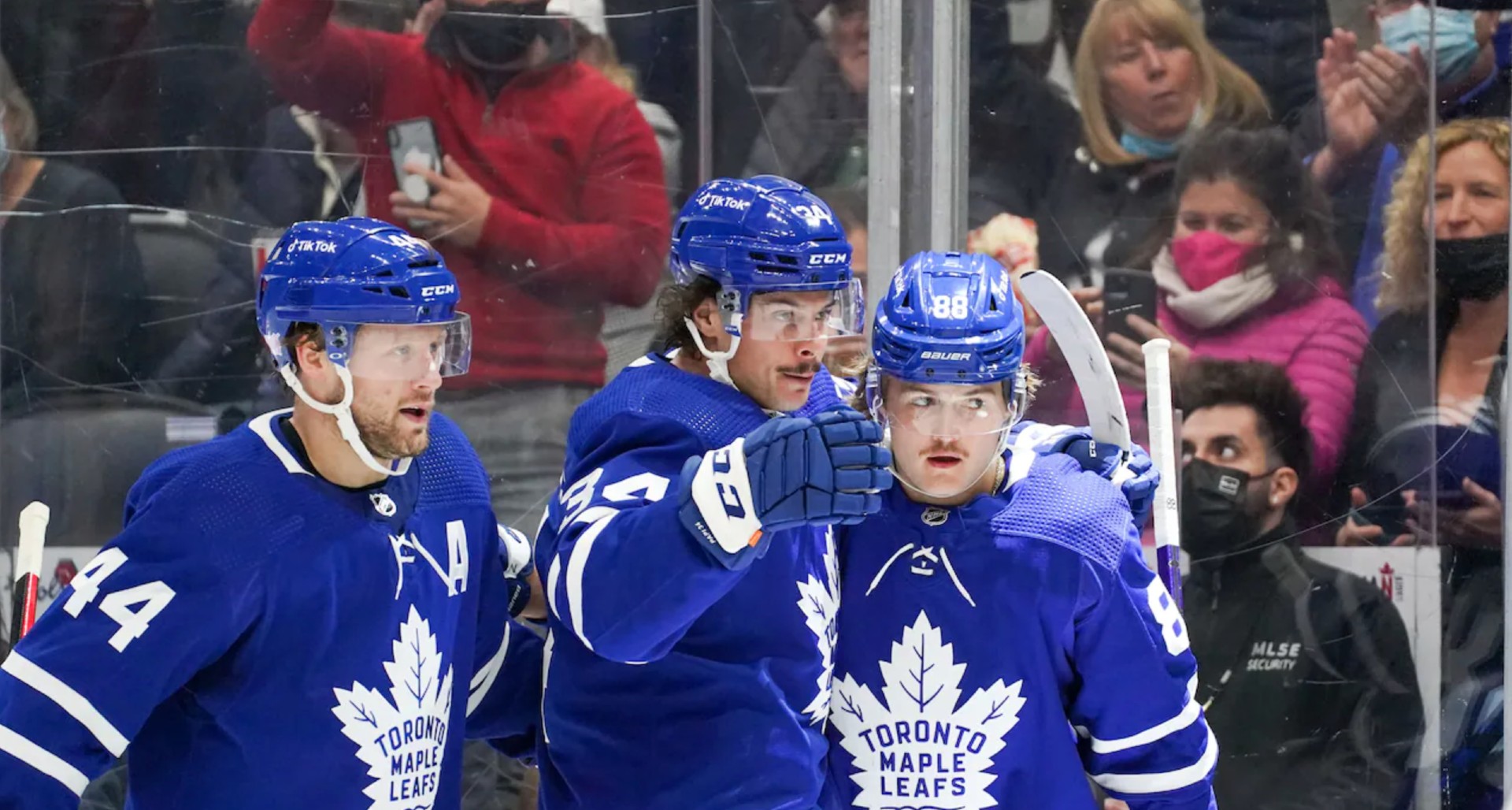
Matthews-Nylander-Tavares-Rielly on the PP with Marner: 8 goals scored in 57:06 TOI
Matthews-Nylander-Tavares-Rielly on the PP without Marner: 10 goals scored in only 16:40 TOI (!!)
— CorsiHL (@CorsiHL) January 6, 2022
I tend to think part of this is the adrenaline of a new unit that the opponents have no tape on, but I’m sure some of it is legitimate. There is no question that surrounding the entire unit with capable shooters can open up different options/spacing.
Excluding shootouts, the Leafs haven't lost two consecutive games since October. In their last 25 games they've lost 4 times in regulation and once in a shootout. In those 25 games they're +41 in goal differential.
— draglikepull (@draglikepull) January 6, 2022
This was before the Colorado game, but it is worth highlighting just how dominant the Leafs have been since their slow start to the season. It’s definitely odd that they have only played 33 games so far. There is still so much hockey left and much to learn about this group.
Shot map @AM34 📈🔥 pic.twitter.com/G8D1dVlbLK
— Meghan Chayka (@MeghanChayka) January 9, 2022
The takeaway: Everyone should go to the net if they want to score goals. There aren’t five people on this planet with a better shot than Auston Matthews, but take a look at the locations of where he is scoring. The only person who has scored more goals than Matthews since he entered the league is Alex Ovechkin, who has eight more goals in 30 more games.
5 Things I Think I’d Do
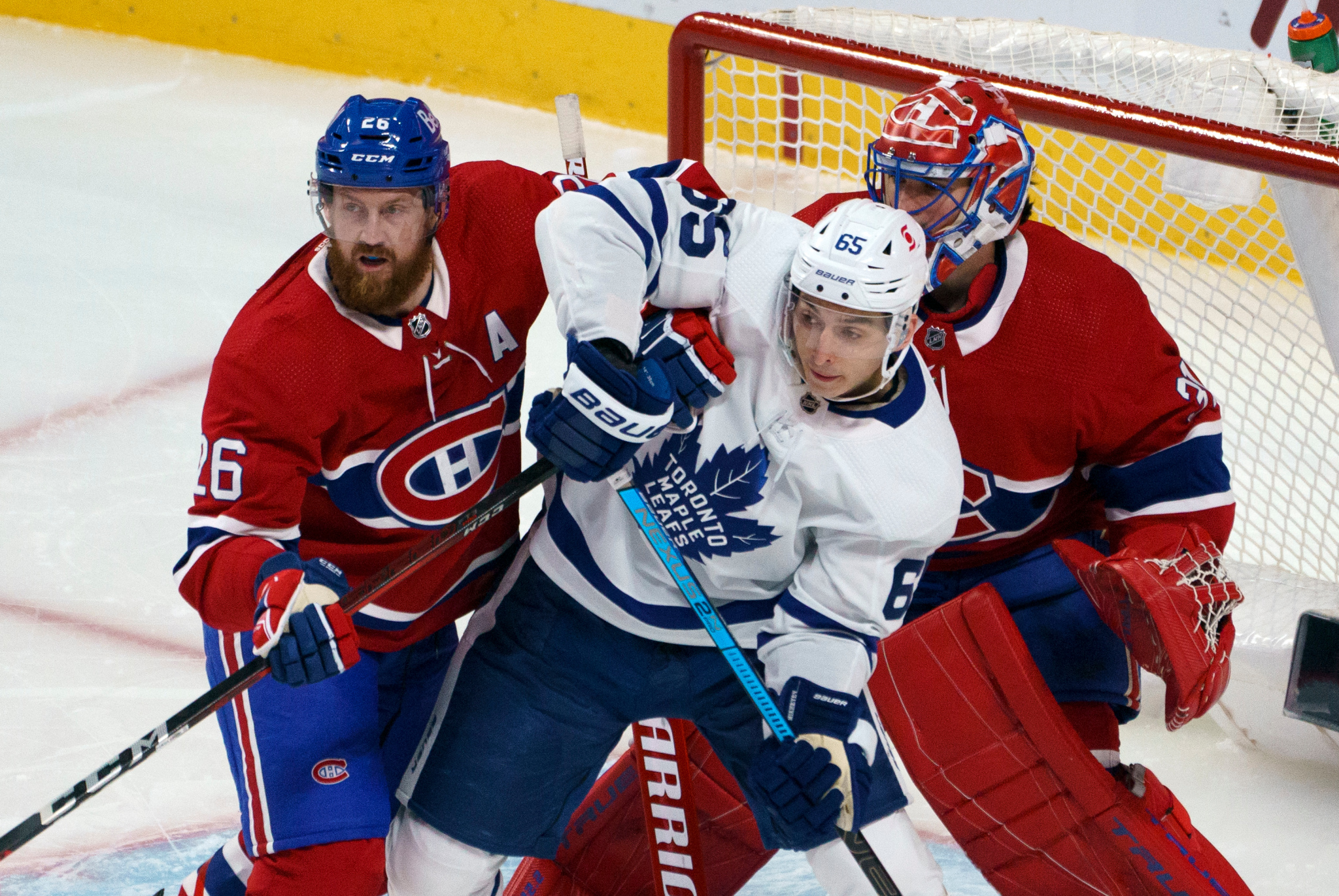
1. Ilya Mikheyev‘s recent goal production is nice, but I don’t think I would put him in the top-six forward group very often (unless the team is protecting a lead). He is good on the forecheck and brings speed, but he doesn’t make plays with the puck. We have seen him receive looks alongside the Leafs more skilled centers – as he did against Colorado – and not really do anything with it.
He’s an ideal third-line winger — the kind of player where if he’s on the third line, it’s a really deep forward group, but if he’s in the top six, it might not be such a great team. That’s not taking anything away from him; he’s best suited for a checking role, not one that requires him to produce at 5v5.
2. That said, I think you have to keep Mikheyev on the power play for now. To rewind a second, we know from the Amazon Prime series that he was vocal about his role. It was reported that he asked for a trade in the offseason. In training camp, he played a role on the power play, and by the time he finally played coming off of an injury, he walked straight onto the man advantage.
I think part of it was a little bit of, “we’re just going to put you here, and you’ll have to put up or shut up,” because there’s almost nothing in his body of work that suggests he should be on the half-wall of an NHL power play. But now he’s popped a few in while playing in that spot. Even when fully healthy, the Leafs kind of have to keep him there until he proves otherwise. He has some rope now.
3. I think I would be looking to shift Jason Spezza back onto the wing. He has just two non-power play points over his last 13 games, but he has looked good on the power play, so I think it’s going under the radar.
At center, he has to come back lower into his own zone and own more responsibility in that end of the ice, which takes away from his offense. The best thing Spezza can provide for the team is depth scoring; even though I don’t love Pierre Engvall at center, I’d shift him over and free up Spezza to focus on offense as a winger.
4. Even when given a chance to get back into the lineup, I think Travis Dermott really hasn’t done anything to suggest he’s anything more than the number-seven defenseman on this team. He simply isn’t moving the needle much across the board right now, which is a shame. I think he has more to give, but it’s not happening.
5. For all the talk about Mitch Marner on the top power-play unit, I don’t see how you can take a player off the top unit in the regular season when he is making that much money. In the playoffs? Maybe, but not regular season at his pay grade in this market. I think the only way they could perhaps get away with it is if they split the units (for example, if he takes John Tavares with him to the second unit).



![Sheldon Keefe on the Maple Leafs’ struggling power play: “[We’ve scored] one out of 11 high-danger chances in tight to the net… We have been in those spots and haven’t converted” Sheldon Keefe, playoff press conference](https://mapleleafshotstove.com/wp-content/uploads/2024/04/keefe-pc-game-3-218x150.jpg)

![Jim Montgomery Post Game, Bruins 4 vs. Leafs 2: “[Marchand] still manages to get under people’s skin, yet he doesn’t cross the line” Jim Montgomery, Boston Bruins post game](https://mapleleafshotstove.com/wp-content/uploads/2024/04/jim-monty-pg-to-218x150.jpg)























![Sheldon Keefe on the Maple Leafs’ struggling power play: “[We’ve scored] one out of 11 high-danger chances in tight to the net… We have been in those spots and haven’t converted” Sheldon Keefe, playoff press conference](https://mapleleafshotstove.com/wp-content/uploads/2024/04/keefe-pc-game-3-100x70.jpg)



![Jim Montgomery Post Game, Bruins 4 vs. Leafs 2: “[Marchand] still manages to get under people’s skin, yet he doesn’t cross the line” Jim Montgomery, Boston Bruins post game](https://mapleleafshotstove.com/wp-content/uploads/2024/04/jim-monty-pg-to-100x70.jpg)
